I would like to compare per row 2 df based on serial and day variables and to create a new column called compare to highlight the missing rows. How can this be done in R? I tried the inner_join function without success.
Sample structure df1 and df2
Desired output:
Sample data
df1<-structure(list(serial = c(1, 2, 3, 4, 5), day = c(1, 0, 1, 0,
0)), class = c("spec_tbl_df", "tbl_df", "tbl", "data.frame"), row.names = c(NA,
-5L), spec = structure(list(cols = list(serial = structure(list(), class = c("collector_double",
"collector")), day = structure(list(), class = c("collector_double",
"collector"))), default = structure(list(), class = c("collector_guess",
"collector")), skip = 1L), class = "col_spec"))
df2<-structure(list(serial = c(1, 2, 3, 4, 5, 5, 7), day = c(1, 0,
1, 0, 0, 1, 1)), class = c("spec_tbl_df", "tbl_df", "tbl", "data.frame"
), row.names = c(NA, -7L), spec = structure(list(cols = list(
serial = structure(list(), class = c("collector_double",
"collector")), day = structure(list(), class = c("collector_double",
"collector"))), default = structure(list(), class = c("collector_guess",
"collector")), skip = 1L), class = "col_spec"))


